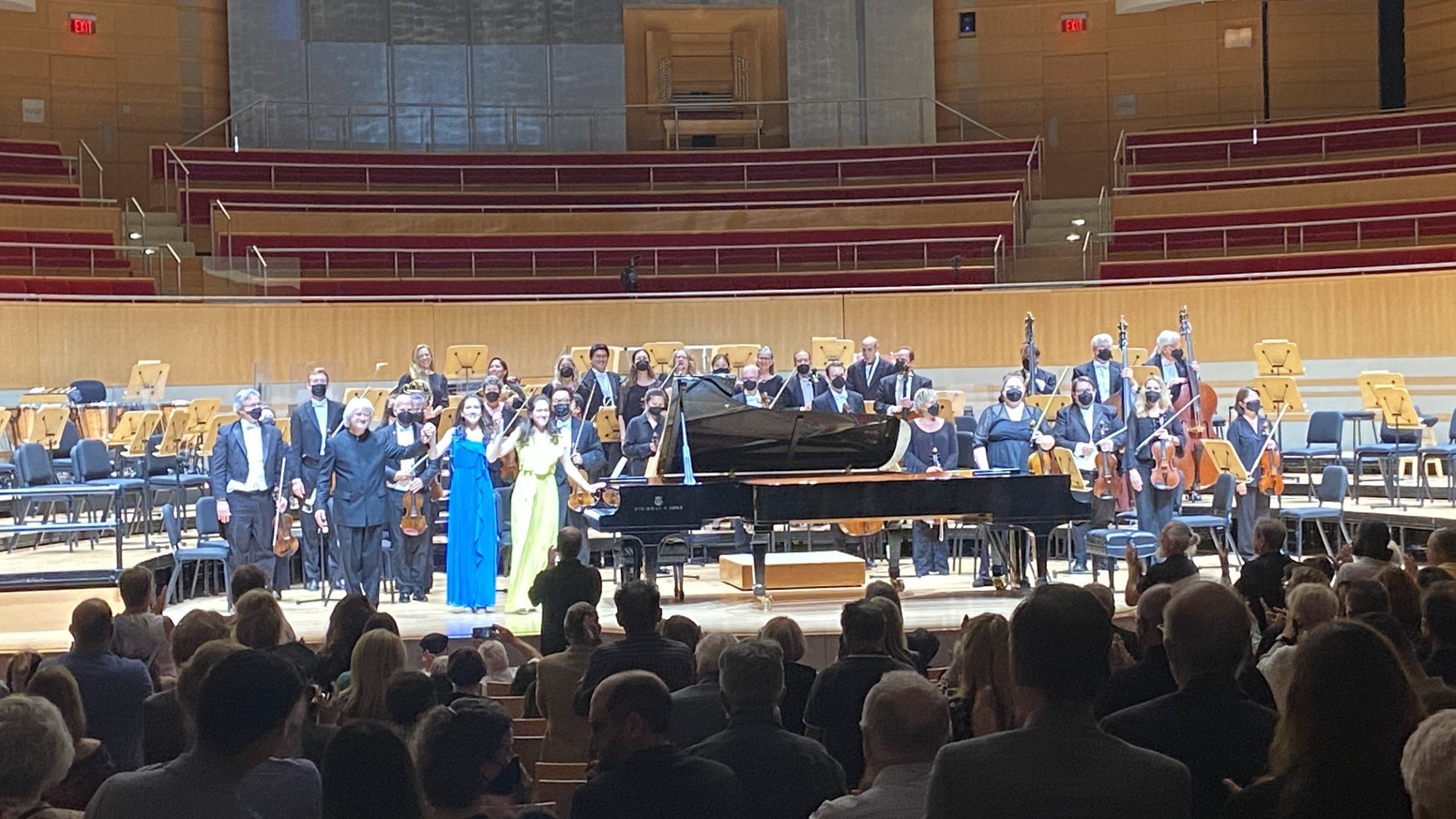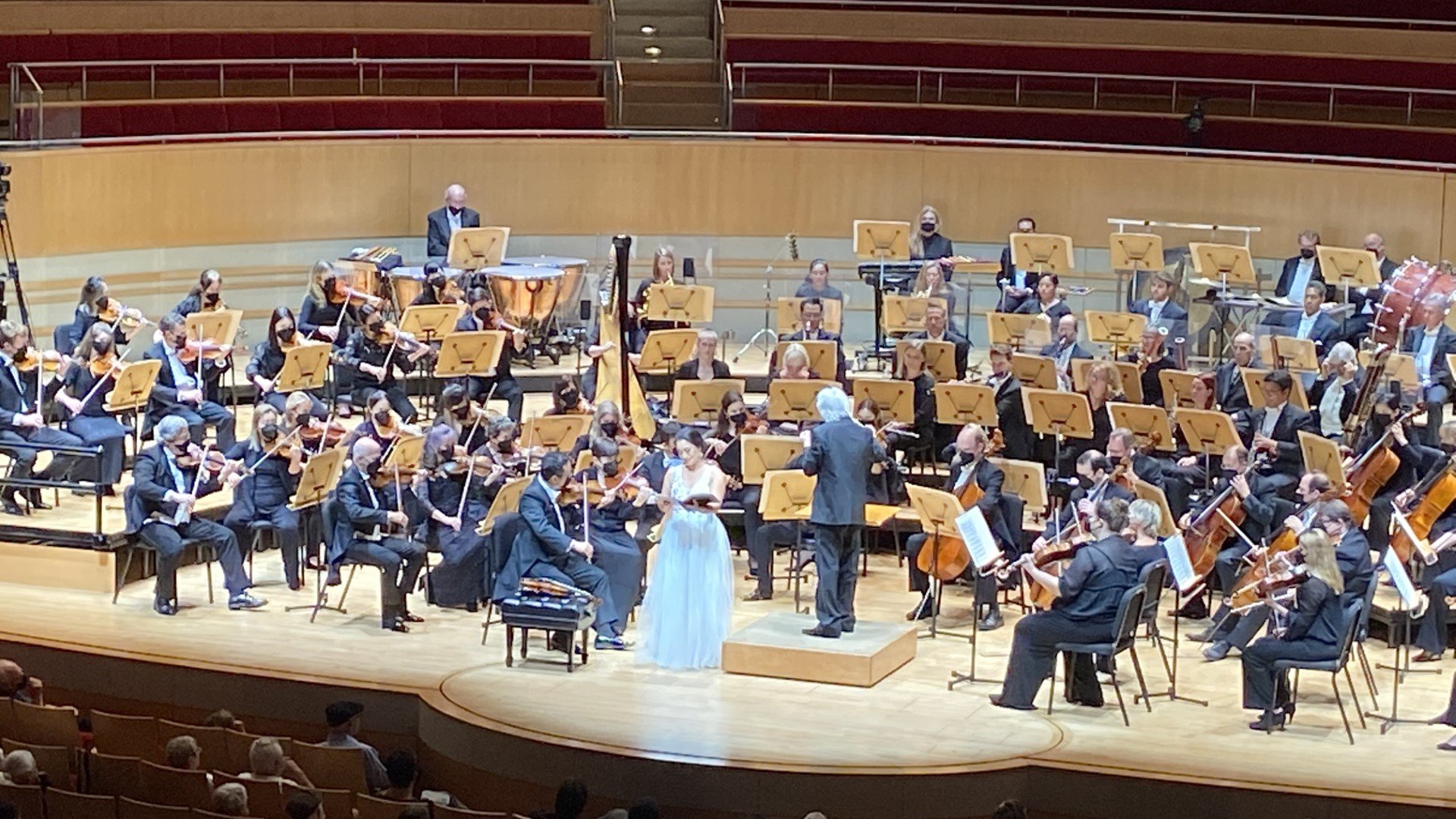Joyful Mozart and Mahler Ends Pacific Symphony Season
/By Truman C. Wang
6/23/2022
In this final concert of the 2021-2022 season, the Pacific Symphony played two delightful, joyful works seemingly to welcome the start of summer and send the audience off on their summer travels (assuming they are not derailed by the dreaded flight cancellations).
“Happiness, gaiety, overflowing richness of invention, and joy in itself” is how Alfred Einstein describes Mozart’s Concerto for Two Pianos, K.365, written in 1779 after returning home from his fruitful trip to Mannheim and Paris. The ‘overflowing’ joy even spills over into the mouth of Papageno years later in a melody from the concerto’s last movement. (One could also say Mozart’s love for singing and Italian opera spills over into his instrumental works.)
On Thursday evening, the Concerto was heard in its original form, without the clarinets, trumpets and timpani that Mozart added later for Vienna. The different versions served different purposes: Mozart played the former with his sister Nannerl and the latter with his aristocrat pupil Fräulein Aurnhammer. In Costa Mesa, sisters Christina and Michelle Naughton engaged in a heated but good-natured contest of virtuosity in the opening movement. Seated face-to-face across two pianos placed side by side, the two sisters showed an extraordinary and satisfying rapport, in their dialogs and their ability to finish each other’s sentences instinctively. The orchestra accompanied the two pianos sensitively in the background, coming out to play only the in the cheerful final rondo.
And coming out to play it did. Mahler’s Symphony No. 4 is probably the sunniest, the least troubled, of his symphonies. In the first of four scheduled performances, Carl St. Clair and his orchestra executed with energy, delight, beauty of sound and of phrasing, and an uncanny accord between conductor and players from three decades of playing together. The dark clouds were glossed over in favor of a beautiful sunlit forest; one wished for more sinister stabbing accents in the ‘fiddler of death’ scherzo, or greater tempo and dynamics contrasts in the very laid-back slow movement. The finale, a child’s-eye vision of heaven, based on the song “Das himmlische leben” Mahler wrote eight years earlier, was attractively sung by soprano Cecilia Violetta Lopez, conveying childlike innocence in tone and in phrasing, much as Reri Grist did for Bernstein in 1960 (New York Philharmonic), or Kathleen Battle did for Maazel in 1984 (Vienna Philharmonic). In the end, heavenly bliss turns into tomb-like silence, which begs the question – was all this just a pipe dream?
Enjoy your fun summer vacation while it lasted.
Truman C. Wang is Editor-in-Chief of Classical Voice, whose articles have appeared in the Pasadena Star-News, San Gabriel Valley Tribune, other Southern California publications, as well as the Hawaiian Chinese Daily. He studied Integrative Biology and Music at U.C. Berkeley.





